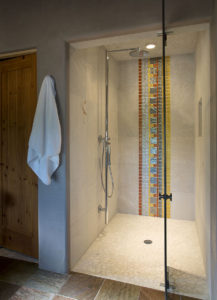Number Crunching for Wish Fulfillment

When embarking on an interior design project, it is easy (and, of course, very, very fun) to think about all the possibilities that are available, particularly as you begin to build your wish list full of images and colors and collections from which you’ve drawn inspiration. After all, without wishes, there is nothing to come true. However, wishes (unless you have a fairy godmother) can’t become reality unless you’ve also got a plan. Determining your budget and available time to take the project on, and see it through, is the first step.
As with any undertaking, when approaching an interior design project whether furnishings, renovation, new construction or anything in between, one of the most important places to begin is with a realistic budget (or at least a range you can live with). Understanding all of the potential expenditures, and placing them in some sort of ranking is a good place to start. There will undoubtedly be consultants, but how many? There may be a contractor, engineers, and design professionals (architect or draftsperson, interior designer, landscape architect, subcontractors). Should you go with a lesser-known or lesser qualified professional to save fees or should you hire a proven, known quantity? Do you make a conscious decision to allocate a certain number or percentage of your budget to furnishings versus perhaps something like upgrading finishes or fixtures, or vice versa?
Starting out with a list of all of the necessary elements (lighting, countertops, cabinetry, flooring, window coverings, etc.) is a good place to begin. Online exploration can yield some pretty good ideas of what specific items might cost, and certainly enough to give you a sense of the range of costs. Your selected professionals can corroborate or adjust these numbers based on their understanding of your needs and desires (as well as their knowledge of the market, as we discussed in the last column).
A key component in budgeting, whether for household expenses or a new design project, is prioritizing. If you aren’t ready or able to bite off the entire project at once, what are the factors that will determine what the various phases might look like? In addition to cash flow, other drivers might be what needs to happen before something else can happen. For instance, getting the guest house completed to have a place to stay during the main house renovation, or getting the furniture out and upholstered while the floors are being replaced, or the floors and walls finished before the draperies can be tackled, are all perfectly sensible questions. Also, it’s important to consider lead times and how they will play into the phasing. Furnishings can easily take four to five months between ordering and installation. Specialty materials such as plumbing fixtures and tile can be back-ordered for many months.
When soliciting the help of professionals, it is best to be upfront about your expectations for the quality of the finishes and furnishings. This will help ensure you get something close to reality. It is better to receive higher numbers that are realistic, and then whittle where you can. It is also important to be realistic in assessing yourself and your level of comfort. If you know that you need more hand-holding and will want to explore many options, or alternatively you’re someone who only needs a few choices presented by an experienced professional to make quick decisions, will make a difference in the projected fees.
More information is not always better than less, but in this case, it certainly is.
Join us next month where we'll take on the subject of potential necessary adjustments, the need for flexibility, and keeping an eye on the prize


